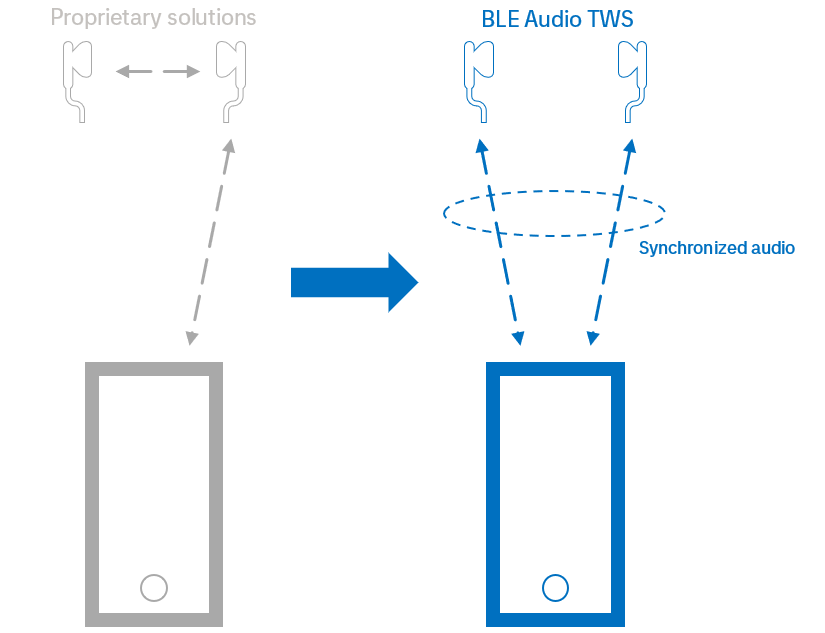Welcome to the beginning of our exciting journey into the world of Bluetooth Low Energy (BLE) Audio – the latest breakthrough in sound technology. This marks the first installment in a series of bite-sized insights dedicated to exploring BLE Audio.
Why is BLE Audio capturing our attention? At Tietoevry, we proudly partner with major audio industry leaders, actively shaping the landscape of connected audio from chip to cloud. This technology has us truly intrigued. Now, let's delve into the fascinating realm of BLE Audio.
Due to the recent explosion in numbers of sold wireless earbuds, I’m pretty sure that everyone is aware of these small useful devices. Most of these are based on Bluetooth Classic Audio. A standard that has been around for ages and is also well known from uses in our cars thanks to its handsfree functionality.
The simplest explanation I can think of is, that BLE Audio is a next generation of this Bluetooth audio as we know it nowadays.
Now the crucial question is, why do we even need a next generation? The current solution is ubiquitous and works quite well. So why spend time, effort, and at the end of the day our money, on something new?
If you do internet research, it’s easy to conclude that the main benefits of this new technology are lower power consumption, lower latency and new features it brings. Personally, if I as a heavy user of Bluetooth classic earbuds, should pick the most appealing benefit, it would be the new features. Unlike Bluetooth classic, BLE Audio is not limited only to point to point connection. Getting rid of this dark legacy opens the door for new features such as True Wireless Stereo (TWS) or Auracast.

Simply put, TWS means that we have two independent earbuds each receiving its own channel. But wait a minute, we do have TWS with the current standard, don’t we? Well, sort of. Due to the point-to-point nature of the “old Bluetooth” this must be achieved by vendor specific hacks. Usually, the earbuds also need to talk to each other and only one of them talks to the audio source. This approach is a bit clumsy as it requires one more transmitter in one of the headphones and might introduce other complications. Luckily, BLE Audio allows to both headphones to talk to the source directly.
So, will this “True TWS” improve my user experience? Frankly, no, at least not directly. But I believe it clearly shows that the “old Bluetooth Audio” already hit its limits. At the same time, it’s a nice demonstration how much effort was invested into making BLE Audio as future proof as possible.
The other new feature I mentioned is Auracast. Auracast is a fancy name for BLE Audio broadcast. In other words, transmitting audio from one source to multiple listening devices. The most straightforward use case that anyone can imagine is sharing a music stream from your phone with your friends, in a similar way that you can share an internet connection by turning your phone into a Wi-Fi hotspot. There are however more possibilities. My favourite scenario is a TV that allows you to connect multiple pairs of earbuds. So that a group of people can watch a movie without disturbing others not interested in watching.

This short “BLE Audio in a nutshell” text has no ambition to be a complete guide to the new spec or to bring a comprehensive description of all the new features. However, hopefully I succeeded in conveying the message that BLE Audio is an interesting technology and not just some buzzword. Next time we will have a closer look at one of its aspects, so stay tuned.
Read more:
Connected devices, software development, and engineering services for intelligent electronics
Ladislav Podivin is a senior software engineer at Tietoevry focusing on BLE Audios and other new technologies. He has 10+ years of experience with software development in R&D environment in fields such as aerospace or electron microscopy. During his career he has worked in various roles ranging from a developer to a people manager and a product owner.